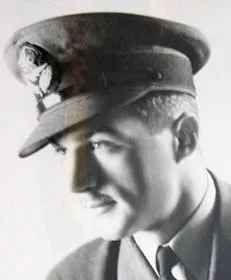Desourdy, Vincent George (Pilot Officer)
Killed in Action 1942-May-26


Birth Date: 1918
Born:
Parents: Herman & Dora Desourdy
Spouse:
Home: Port Arthur, Ontario (parents)
Enlistment:
Enlistment Date: unkown date
Service
RCAF
Unit
235 (FB) Sqn- Squadron (RAF)
Jaculamur Humi We strike them to the ground
Base
RAF Sumburgh (Shetlands)
Rank
Pilot Officer
Position
Pilot
Service Numbers
J/6400
Crew or Other Personnel
Beaufighter T5133
Beaufighter serial: T5133

Bristol Beaufighter, coded PN-B.
The Bristol Type 156 Beaufighter (often referred to simply as the "Beau") was a multi-role aircraft developed during the Second World War in the UK. It was originally conceived as a heavy fighter variant of the Bristol Beaufort bomber. Upon its entry to service, the Beaufighter proved to be well suited to the night fighter role, for which the RAF initially deployed the type during the height of the Battle of Britain, in part due to its large size allowing it to accommodate both heavy armaments and early airborne interception radar without major performance penalties.
As its wartime service continued, the Beaufighter was used in many different roles; receiving the nicknames Rockbeau for its use as a rocket-armed ground attack aircraft, and Torbeau in its role as a torpedo bomber against Axis shipping, in which it came to replace the Beaufort which had preceded it. In later operations, it served mainly as a maritime strike/ground attack aircraft, RAF Coastal Command having operated the largest number of Beaufighters amongst all other commands at one point.
The Beaufighter saw extensive service during the war with the RAF (59 squadrons), Fleet Air Arm (15 squadrons), RAAF (seven squadrons), RCAF (four squadrons), USAAF (four squadrons), RNZAF (two squadrons), SAAF (two squadrons) and the Free Polish Air Force (one squadron). In addition, variants of the Beaufighter were also manufactured in Australia by the Department of Aircraft Production (DAP), often called the DAP Beaufighter. n the fall of 1940, Luftwaffe bombers, unable to escape Allied fighters by day, started flying night missions, where they would encounter much less opposition. Immediately, the Allies prepared their response: the improvement of interception radars used in ground controls, the use of twin-engine Bristol Beaufighters as night-fighter aircraft, and the development of the Mk. IV airborne interception radar. Faster than a Junkers Ju 88, the Beaufighter displayed impressive firepower. Three RCAF squadrons were involved in night fighter operations, Nos. 406, 409 and 410, created in the spring and summer of 1941. Harold Skaarup web page with revisions